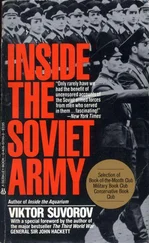Shooting guilds spread rapidly in central Europe during the first decades of the sixteenth century, and soon cities and towns sponsored competitions with their neighbors. More than 200 shooters from as far away as Frankfurt am Main and Innsbruck competed at Zurich in 1504. As shooting skills and weapon manufacturing techniques improved, competition ranges increased to 200 and 300 meters.
Despite continuing technical improvements, firearms remained dependent on dry weather conditions, causing battlefield commanders to continue to rely on pikes, bows, and crossbows in combat. When weather permitted, commanders still used arquebuses to fire in volley and placed little emphasis on marksmanship.
Rifled weapons were expensive to manufacture but their primary limitation in military use was the slow process of having to tamp a leaden bullet down the barrel to ensure it would “take” to the rifling when fired. A few well-armed marksmen, however, began to display the merits of single, well-aimed shots from firearms. Leonardo da Vinci included marksmanship among his many talents. During the defense of Florence in 1520, Da Vinci fired a rifle of his own design from the city’s walls to kill enemy soldiers at ranges up to 300 meters.
Another Italian artist, metalsmith, inventor, and marksman, Benvenuto Cellini, also displayed the merits of accurate gunfire and the spirit of future snipers. During the siege of Rome in 1527, Cellini fired the shot that killed the opposing commander and ended the battle. In his autobiography, Cellini outlined mental characteristics of a good shooter and commented on the “relaxation” produced by engaging a target at long range. Cellini stated, “I will give but one particular, which will astonish good shots of every degree; that is, when I charged my gun with powder weighing one-fifth of the ball, it carried two-hundred paces point-blank. My natural temperament was melancholy, and while I was taking these amusements, my heart leaped with joy, and I found I could work better and with far greater mastery than when I spent my whole time in study and manual labor.”
Cellini would not be the last man to experience the satisfaction of skilled marksmanship. As the development of weapons continued, so did individual mastery of their use.
CHAPTER 3

Marksmanship in the New World
AT the same time that the advancements in the uses and delivery systems of gunpowder were expanding the capabilities of expert marksmen, European explorers were adding to the potential territories where lone shooters would impact history. Hernando Cortés, with a force of fewer than 600 men—supported by twenty horses and ten cannonlike arquebuses—conquered more than five million people by defeating the Aztecs of Central America in 1519. In 1533, another Spaniard, Francisco Pizarro, defeated the Incas in South America with an army of 200 and less than half a dozen firearms.
Both Cortés and Pizarro depended on crossbows as their primary weapons, but the surprise and firepower of their few arquebuses directly influenced their victories over far larger forces. In less than two decades, with only a few hundred men and less than two dozen firearms, they had delivered Central and South America to the Spanish Empire. The culture, language, and religion of the entire region remains today mostly Spanish—a direct result of the introduction of firearms into the New World.
North American explorers and settlers also used firearms to occupy land where native inhabitants, initially armed only with bows and arrows, vastly outnumbered them. French explorer Samuel de Champlain used matchlocks against the Iroquois in July 1609. This account appears in Champlain’s diary: “We took, each of us, an arquebus and went ashore. I saw the enemy come out of their barricade to the number of 200, in appearance strong and robust men. I marched on until I was within 30 yards of the enemy. When I saw them make a move to draw their bows upon us, I took aim with my arquebus and shot straight at one of the three chiefs, and with the shot two fell to the ground and one of their companions was wounded. I had put four bullets into my arquebus. The Iroquois were much astonished that two men could have been killed so quickly. As I was reloading my arquebus one of my companions fired a shot which astonished them again, so much that, seeing their chiefs dead, they lost courage and took flight.”
While the use of firearms in the New World expanded during the sixteenth and seventeenth centuries, the major improvements in weapons design continued to take place in Europe. In the early 1600s, gunmakers experimented with mechanical devices, first designing wheel locks that rubbed steel and flint together to create sparks that, in turn, ignited the priming powder in the pan. The rotating parts quickly gave way to the “snaphance,” an improved mechanism in which flint and steel were propelled together by a heavy V-shaped spring. Even though these were significant developments, both devices were too complex and expensive for general military use. As a result they remained mostly in the hands of wealthy sportsmen and hunters instead of soldiers.
It was not until the middle of the seventeenth century that manufacturers perfected the flintlock mechanism, which would dominate weaponry for more than two centuries. [6] Advances in artillery weapons paralleled those of muskets and rifles so that by the seventeenth century artillery shared equal status with the infantry and cavalry on the battlefield.
The flintlock consisted of a spring-loaded hammer that held a flint. When released by the trigger, the hammer-held flint struck a steel edge to produce a spark that ignited the primer powder.
The advantages of the flintlock was that, without the need for lighted matches—which required several yards’ separation between soldiers to prevent pre-ignition of each other’s weapons—formations could be tighter and produce a heavier volume of fire. However, even though it was a great improvement, the flintlock still had limitations. Despite having a cover for the primer pan that offered some protection against rain and damp, moisture continued to cause ignition problems.
Reliability and safety had increased, but because of the cost and time-consuming reloading procedure inherent to rifles, smooth-bore muskets remained the primary military weapon. In 1645, Englishman Oliver Cromwell’s two infantry companies armed with smooth-bore flintlocks directly contributed to the defeat of the Royalists. Other countries quickly adopted the weapons for their armies. By 1670 France had an entire regiment carrying flintlocks.
But soldiers, steeped in tradition and familiar with simple, basic weapons like pikes, did not necessarily trust the new inventions, especially in unfavorable battle conditions. When a rainstorm threatened or a fast advancing enemy did not allow time to reload, infantrymen found their flintlock muskets of use only as clubs. At such times, many infantrymen rammed broken pikes into the musket barrels to form crude bayonets. This did make the weapons into pikes, albeit short ones, but, of course, it also prevented their use as firearms.
About 1680 the Frenchman Marshall Sebastien Le Prestre de Vauban invented the socket bayonet, which mounted outside the barrel and did not interfere with firing the weapon. With that each infantryman could fight as a musketeer and a pikeman. By the end of the century all major armies in Europe were armed with socket-bayonet flintlocks.
The development of paper cartridges further enhanced the flintlock’s capabilities. First suggested by Leonardo da Vinci, paper cartridges became common by the end of the sixteenth century and were standard by the end of the seventeenth. With paper cartridges, which contained premeasured amounts of powder, soldiers could reload quickly by biting open the end of the cartridge, pouring the powder down the barrel, tamping the charge with the remaining paper, and then adding the shot.
Читать дальше













